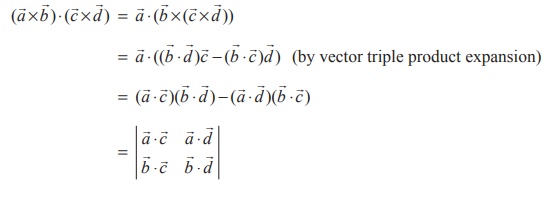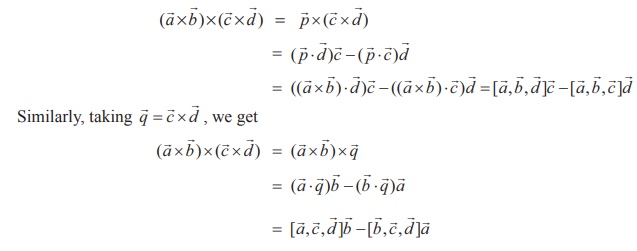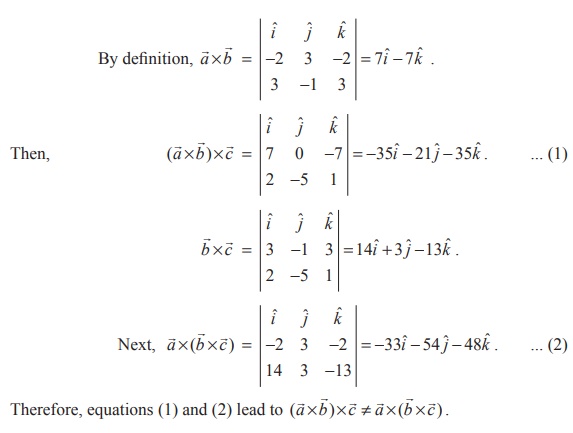Definition, Theorem, Proof, Solved Example Problems, Solution - Jacobi’s Identity and Lagrange’s Identity | 12th Mathematics : UNIT 6 : Applications of Vector Algebra
Chapter: 12th Mathematics : UNIT 6 : Applications of Vector Algebra
Jacobi’s Identity and Lagrange’s Identity
Jacobi’s
Identity and Lagrange’s Identity
Theorem 6.9 (Jacobi’s identity)
For any three vectors ![]() ,
, ![]() ,
, ![]() , we have
, we have  =
= ![]() .
.
Proof
Using vector triple product expansion, we have

Adding the above equations and using the scalar product of two
vectors is commutative, we get
 .
.
Theorem 6.10 (Lagrange’s identity)

Proof
Since dot and cross can be interchanged in a scalar product, we
get

Example 6.19
Prove that 
Solution
Using the definition of the scalar triple product, we get
 ..............(1)
..............(1)
By treating (![]() ×
× ![]() ) as the first vector in the
vector triple product, we find
) as the first vector in the
vector triple product, we find

Using this value in (1), we get

Example 6.20
Prove that  .
.
Solution
Treating (![]() ×
× ![]() ) as the first vector on
the right hand side of the given equation and using the vector triple product
expansion, we get
) as the first vector on
the right hand side of the given equation and using the vector triple product
expansion, we get

Example 6.21
For any four vectors ![]() ,
, ![]() ,
, ![]() ,
, ![]() , we have
, we have

Solution
Taking ![]() = (
= (![]() ×
× ![]() ) as
a single vector and using the vector triple product expansion, we get
) as
a single vector and using the vector triple product expansion, we get

Example 6.22

State whether they are equal.
Solution

Example 6.23

Solution (i)
By definition,

On the other hand, we have

Therefore, from equations (1) and (2), identity (i) is verified.
The verification of identity (ii) is left as an exercise to the reader.
Related Topics